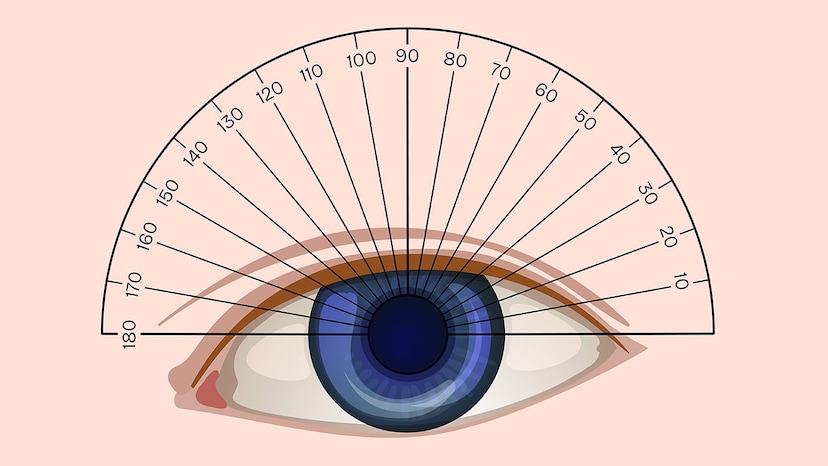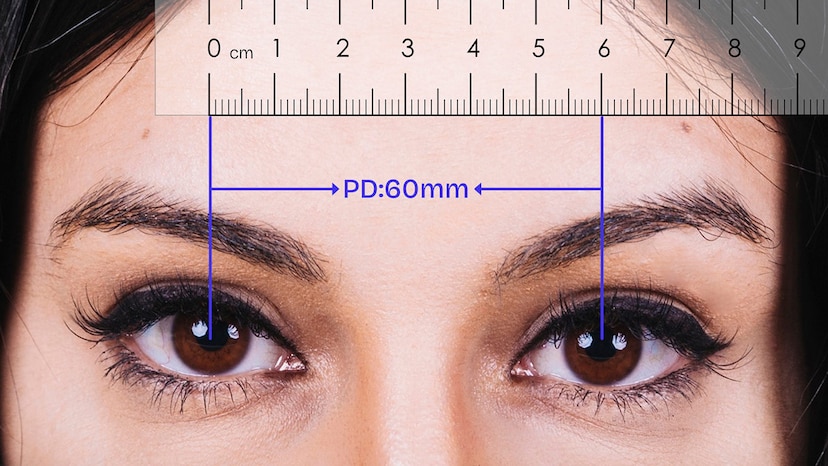Key Facts & Conclusions
OD VS OS: OD = Right Eye (Oculus Dexter), OS = Left Eye (Oculus Sinister) - Standard Latin abbreviations on all eye prescriptions.
Prescription Structure: OD/OS label columns for SPH (nearsightedness/farsightedness), CYL (astigmatism degree), and AXIS (astigmatism angle 1-180°).
Asymmetric Vision Essential: OD/OS ensures accurate correction when eyes have different prescriptions (common in astigmatism).
Online Ordering Requirement: Must verify OD/OS when entering prescription data on eyewear sites (e.g., ZEELOOL) to avoid errors.
This article explains OD vs. OS, what the terms stand for, where you find them on your prescription, and why it all matters. We’ll also cover some other commonly used eye prescription abbreviations and include a quick summary table that will make it easier for you to interpret your vision report. And by the end, you will be better prepared to take on your next trip to the eyewear store or optometrist.
What Does OD vs OS in Eye Prescriptions Mean?
And the abbreviations OD and OS are standard on virtually all eye prescriptions, and they’re simple but useful. OD means “Oculus Dexter” or “right eye” in Latin, and OS means “Oculus Sinister” or “left eye.” In the field of optometry, these are the terms in current use, as they are more precise and clearer than their predecessors, which were medical terms.
Occasionally you’ll see “OU,” which stands for “both eyes.” While some doctors and clinics are moving toward rendering such terms in plain English, such as “right” and “left,” OD and OS still represent the standard in the industry—including printed or formal prescriptions. This eliminates confusion across languages and medical systems.
Each segment of your eye prescription represents the precise correction required for each eye. When you see your eye doctor, the office labels your eye measurements OD and OS, ensuring that your eye doctor isn’t confused when making your lenses—such as if your left and right eyes need differing prescriptions. This difference becomes especially significant for those with asymmetric vision or astigmatism in one of their eyes.

Where You’ll See OD and OS: Reading Your Eye Prescription
You will most commonly see OD and OS on the prescription slip you get after an eye exam. Generally, the prescription is tabulated with rows for SPH, CYL, AXIS, etc., and separate columns for OD and OS for each of the right and left eyes. Each is associated with a specific prescription required to update your view of the world.
An example prescription might read: OD: SPH – 2.00 CYL – 0.50 AXIS 180 OS: SPH – 1.75 CYL – 0.25 AXIS 160 You can see that, for your right eye (OD), you need slightly more correction than your left eye (OS), and both have some astigmatism to a small degree.
These values are essential for crafting customized lenses that offer the best in clarity and comfort. Ordering eyeglasses online, as is the case with most of ZEELOOL's eyeglasses, presents a prompt to enter in the prescription values for your left and right eyes.
Mistaking OD vs. OS can cause catastrophic issues. Just imagine if your prescription indicates different numbers for each eye, and you mixed them up when ordering glasses on the internet: the lenses would not function as planned. It can also lead to double vision, headaches, or even dizziness. Riots are avoided in this manner.
This is also useful when looking at prior prescriptions. As your eye doctor updates your vision correction over time, recognizing which values changed—and for what eye—enables a fuller understanding of how your vision is changing. If you ever want a second opinion or a new provider to take over your prescription, just knowing this would be critical.
Alternate Abbreviations You May Come Across
Along with OD and OS, your eye prescription will likely have other important abbreviations and terms. All of them contribute to determining how your lenses should be manufactured, especially if you have special vision correction needs such as astigmatism or presbyopia.
SPH (sphere) specifies how much lens power is needed to correct nearsightedness (a negative number) or farsightedness (a positive number). It’s the most fundamental component of a prescription and is available for almost all glass or contact lens wearers.
CYL means the degree of astigmatism. You have astigmatism whenever your cornea isn't evenly curved, and the result is blurry or distorted vision. If you have astigmatism, you’ll notice that values are listed here, either positively or negatively.
AXIS is designated in D and represents the location of astigmatism correction. This ranges from 1° to 180° and works alongside CYL to adjust the shape of the corrective lens.
ADD means “addition,” and it is used mainly in bifocal or progressive lenses. That shows the added power that is put on the bottom of the lens to help with close-up work, such as reading.
Pupillary Distance (PD) PD means pupillary distance. It’s the distance, in millimeters, between the centers of your pupils. That means it guarantees the optical center of the lenses is at the right place of your pupils, giving you clear and comfortable vision.
Another treatment option you might see is PRISM, which is used to treat alignment problems like double vision. It displaces the image seen by one eye so that it registers in alignment with the other, enhancing binocular vision. Base is the direction of this prism correction—up, down, in, or out.
While “OU,” or “Oculus Uterque,” as noted above, could show if both eyes have the same prescriptions. This makes writing easier but is less common when each eye requires different correction.
OD vs OS: Quick Summary Table
To make everything easier to remember, here’s a quick reference table summarizing the key meanings of OD and OS, along with other related terms:

This table serves as a helpful tool whenever you review your prescription or prepare to order eyeglasses online. Keep it bookmarked or saved, especially if you frequently shop for eyewear or help others understand their eye prescriptions.
Conclusion
If you know what OD vs. OS means, the complexity of the eye prescription world starts to make sense. These abbreviations simply describe your right and left eyes, but they are pretty important in ensuring the eyeglasses you get are tailored to your personal vision. Once you understand how to read these terms and what they all mean in addition to related measurements such as SPH, CYL, and AXIS, you’ve taken an important step toward better eye care and informed eyewear decisions.
CTA
Now that you know all about OD vs. OS and how to read your prescription accurately, it’s time to find the right pair of glasses to suit your style and vision needs. ZEELOOL has curated a collection of trendy, functional, and fashionable eyeglasses that are just right for you, including women's glasses, men's glasses, kids' glasses, and reading glasses. See better. Look smarter. Feel confident.




















